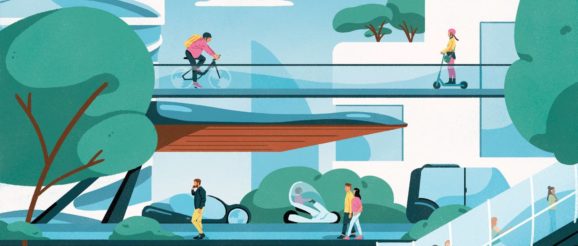The City of Tomorrow: challenges and innovation in the urban environment | WIRED UK

The world is becoming urban. Humans have known for millennia that settling in clusters makes life easier and more productive. By 2050, around 70 per cent of the world’s population will live in cities (a level already surpassed by many developed countries).
But with the great advantages of urban settlement come great challenges: the task of feeding city populations and providing basic services such as sewerage, healthcare, infrastructure and energy while meeting their aspirations for a satisfying quality of life becomes more complex.
At the core of this urban challenge is mobility. People must move for work and for leisure, and to access many of the services on which they depend. At the same time, the goods that they need or desire must be manufactured and brought to convenient locations, whether retail outlets or the consumer’s front door. And all of this movement – this shifting labyrinth of goods, services and people – must compete for a finite share of the urban footprint, along with buildings, utility networks and the residents themselves.
Read next
Why doctors and gamers are equally excited for 5G’s launch
In late 2018, Ford convened a series of City of Tomorrow Symposiums in Valencia, Cologne and London, bringing together urban planners, transport experts, local politicians, technology leaders and academics to explore the challenges facing urban mobility over the coming years.
This report draws on the conclusions of those Ford City of Tomorrow Symposiums and explores both the challenges and some of the proposed solutions in depth, helped by a range of expert witnesses from industry, academia and public administration.
Read next
Five films and shows perfect for the new Samsung 8K TV
Part 1: Barriers to mobility in the city of tomorrow
We look at the four main issues standing between city dwellers and the mobility they aspire to have.
Part 2: Roadmap to a better mobility future
We lay out a range of approaches city authorities might take in removing these barriers, including new forms of transportation, better collection and use of data, and improved ways of winning support for new initiatives.
Those who must confront these challenges – urban planners, architects, suppliers of mobility services – face unprecedented pressures. The wealth that modern societies have achieved means more demand than ever for mobility and an urgent desire for healthy air and safe roads. Let’s explore the City of Tomorrow.
To learn more about Ford Mobility, click here.
